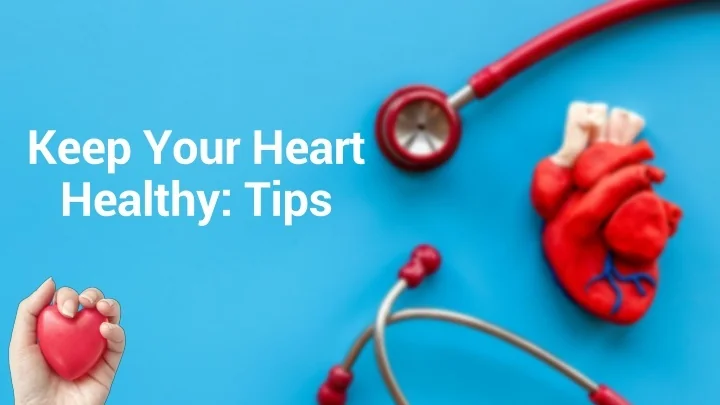
Foods That Dangerously Increase Your Blood Sugar: What to Avoid
Introduction to Blood Sugar Levels
Blood sugar, or glucose levels, refer to the concentration of glucose present in the blood. Glucose serves as the primary source of energy for our body’s cells and plays a crucial role in various bodily functions. Maintaining balanced blood sugar levels is essential for overall health, as both elevated and low levels can lead to significant health complications. The body typically regulates blood sugar through hormones like insulin and glucagon, produced by the pancreas. While normal blood sugar levels can vary, a consistent elevation can indicate an underlying health issue, such as insulin resistance or diabetes.
When blood sugar levels rise above the normal range, it can lead to a series of physiological changes that compromise health. Elevated glucose levels can cause symptoms like increased thirst, frequent urination, fatigue, and blurred vision. Over time, chronic high blood sugar can result in severe consequences, including cardiovascular disease, nerve damage, and kidney failure. It’s vital to recognize how diet directly influences blood sugar management. Foods rich in carbohydrates, particularly refined sugars, can cause rapid spikes in glucose, making it increasingly critical to be aware of dietary choices.
Many foods contribute to unmanaged blood sugar levels, leading individuals towards potential health risks and complications. Understanding the impact of various food items plays an integral role in blood sugar regulation and can serve as a preventive measure against diabetes. Adopting a balanced diet that includes low-glycemic index foods can assist in maintaining steady blood sugar levels. Consequently, being knowledgeable about which foods to avoid can empower individuals to make informed choices, significantly affecting their overall health and well-being.
Understanding Glycemic Index
The glycemic index (GI) is a ranking system that categorizes foods based on their immediate impact on blood glucose levels. Foods are assigned a GI score, typically ranging from 0 to 100, where pure glucose is given a score of 100. This system helps to differentiate between how quickly carbohydrates in food raise blood sugar after consumption. Low GI foods, with scores of 55 or less, are digested and absorbed slowly, resulting in a gradual rise in blood sugar levels. Conversely, high GI foods, with scores above 70, cause rapid spikes in blood glucose, which can be particularly detrimental for individuals managing diabetes or those aiming for stable energy levels.
Understanding the glycemic index is important for diet planning, especially for individuals who need to monitor their blood sugar closely. By choosing foods with a low GI, it can lead to improved long-term glucose control, reduce insulin resistance, and decrease the risk of chronic diseases associated with high blood sugar levels, such as type 2 diabetes. It is significant to note that the glycemic index does not consider the amount of carbohydrate in a serving; hence, the concept of glycemic load (GL) is often introduced. Glycemic load takes into account both the quality and quantity of carbohydrates in a food, providing a more comprehensive awareness for dietary decisions.
Different types of carbohydrates can contribute to variations in GI among similar foods. For example, whole grains generally have a lower GI compared to refined grains, while fruits and legumes also tend to have a lower glycemic index. When planning meals, focusing on foods with a lower GI can support better blood sugar management, highlighting the importance of understanding glycemic index as a tool in nutritional choices.
High-Carbohydrate Foods and Their Effects
High-carbohydrate foods are known contributors to rapid elevations in blood sugar levels. These foods, particularly those with a high glycemic index, can lead to spikes in glucose levels shortly after consumption. White bread, for instance, is a common staple that many individuals consume without realizing its potential impact. The refining process removes the bran and germ, which are rich in fiber, leaving behind a product that digests quickly and converts into glucose within the bloodstream rapidly. This swift conversion can lead to a sudden rise in blood sugar levels.
Similarly, pastries and other sugary baked goods are also high in refined carbohydrates and added sugars. When these items are ingested, the body breaks them down into sugar more quickly, causing both a rise in insulin and a crash in energy shortly thereafter. Sugar-sweetened beverages, including sodas and sweetened teas, pose an additional risk due to their high sugar content. These drinks provide no nutritional value, and the liquid form of sugar bypasses the body’s natural satiety signals, leading to increased intake and further spikes in blood sugar.
Rice, particularly white rice, is another significant source of carbohydrates that can affect glycemic control. Its high starch content makes it a quick source of glucose upon digestion. For those looking to better manage their blood sugar levels, it is advisable to seek out alternatives that are lower in carbohydrates and higher in fiber. Whole grains such as quinoa or brown rice offer a more beneficial option as they digest more slowly and help maintain steadier glucose levels.
Choosing options like leafy greens, legumes, and whole foods can aid in reducing the risk of blood sugar spikes. Incorporating fiber-rich foods can also assist in stabilizing blood sugar levels, making them crucial components of a balanced diet aimed at not only achieving health but also managing diabetic conditions effectively.
Fruits That Can Spike Blood Sugar
Fruits are often heralded as a healthy snack option, effectively delivering essential vitamins, minerals, and fiber. However, certain fruits have higher sugar content and can lead to significant increases in blood sugar levels, particularly for individuals with insulin sensitivity or diabetes. Among the most notable fruits are bananas, grapes, and watermelon, which, while nutritious, pose challenges in terms of blood sugar management.
Bananas are rich in potassium and essential nutrients, yet they contain substantial natural sugars, particularly when ripe. A medium banana has approximately 14 grams of sugar, which can quickly elevate blood glucose levels if consumed in large quantities. For those seeking to maintain stable blood sugar levels, portion control is crucial. Moderation can allow banana inclusion in a balanced diet, especially when combined with foods rich in protein or healthy fats that can help mitigate sugar absorption.
Similarly, grapes, often touted for their antioxidants, can have a surprisingly high glycemic impact. A cup of grapes contains roughly 23 grams of sugar. This makes it imperative for individuals to monitor their intake, especially during snacking moments. Opting for smaller servings or pairing them with a protein source like cheese can help in reducing the overall glycemic response.
Watermelon, while hydrating, is another fruit that may increase blood sugar rapidly, largely due to its high glycemic index. A typical serving can deliver about 10 grams of sugar. To manage blood sugar effectively, choosing lower glycemic index fruit alternatives such as berries or cherries can be beneficial. These fruits not only yield less sugar per serving but also offer additional fiber, which plays a vital role in controlling blood sugar spikes.
In conclusion, understanding the sugar content in various fruits and practicing portion control can aid individuals in managing their blood sugar levels more effectively. Making informed choices and opting for lower glycemic alternatives can contribute to a balanced diet without compromising health.
Processed Foods: Hidden Sugars and Carbs
Processed foods have become a staple in many diets due to their convenience and variety. However, it is essential to recognize that these products often contain hidden sugars and refined carbohydrates, which can significantly increase blood sugar levels. Many snacks, sauces, and ready-to-eat meals are laden with added sugars, making it difficult for consumers to make informed choices.
One common category of processed foods is snacks, such as granola bars, flavored yogurts, and even certain so-called healthy snacks. Although these products may be marketed as nutritious, a closer examination of the ingredient list frequently reveals a high sugar content. Manufacturers often use sugars in various forms, such as high fructose corn syrup or cane syrup, which can quickly elevate blood glucose levels, particularly when consumed in large quantities.
Another category to consider is sauces, including ketchup, barbecue sauce, and salad dressings. Many of these sauces contain added sugars that may not be immediately apparent. For instance, a tablespoon of ketchup can contain as much as 4 grams of sugar, which is a substantial amount when considering the cumulative effects of multiple servings. It is crucial to read labels thoroughly and opt for low-sugar alternatives to minimize sugar intake.
Convenience meals, such as frozen dinners and instant noodles, often promise time-saving benefits but come at the cost of nutritional quality. These meals can be heavily processed and loaded with refined carbohydrates that rapidly convert to sugars in the bloodstream. This transformation can lead to spikes in blood sugar, making it vital for individuals managing their blood sugar levels to scrutinize the nutritional information provided on packaging.
The importance of choosing whole foods cannot be overstated. By opting for fresh fruits, vegetables, whole grains, and lean proteins, individuals can significantly reduce their intake of hidden sugars and refined carbohydrates. Such dietary choices can help maintain stable blood sugar levels and promote overall health.
Impact of Sugary Drinks on Blood Sugar
In recent years, the impact of sugary drinks on blood sugar levels has drawn considerable attention from health experts. Beverages such as sodas, fruit juices, sweetened teas, and energy drinks contain high levels of added sugars, which can lead to rapid spikes in blood glucose levels. Unlike solid foods, liquid calories are absorbed more quickly into the bloodstream, resulting in a significant increase in insulin release. This swift response can be especially problematic for individuals with insulin resistance or those at risk of developing type 2 diabetes.
The sugars present in these drinks are often high-fructose corn syrup or sucrose, both of which can exacerbate insulin sensitivity. In particular, the consumption of sugary beverages has been linked to a higher likelihood of developing metabolic syndrome, a condition characterized by elevated blood pressure, increased body fat, and abnormal cholesterol levels. These health issues are closely tied to significant fluctuations in blood sugar levels, making sugary drinks a serious risk factor that should not be overlooked.
Moreover, unlike foods that typically contribute to satiety, sugary drinks do not provide the same feeling of fullness. As a result, individuals may consume more calories overall, further exacerbating blood sugar spikes. Additionally, the high glycemic index of these beverages can encourage emotional eating and cravings for more high-sugar foods, creating a cycle that contributes to longer-term blood sugar issues.
Fortunately, there are healthier beverage alternatives available. Water, herbal teas, and beverages sweetened with natural sweeteners like stevia can satisfy thirst without elevating blood sugar. Additionally, incorporating beverages rich in nutrients, such as smoothies made with whole fruits and vegetables, can provide hydration along with essential vitamins and minerals while keeping blood sugar levels stable.
Dairy Products and Blood Sugar Levels
When considering dietary choices that can significantly influence blood sugar levels, dairy products merit close examination. While dairy can be part of a balanced diet, certain types can contribute to elevated blood sugar, particularly full-fat and flavored yogurts, as well as sweetened milk products. These variations often contain added sugars and fats that not only increase their caloric content but also adversely affect glycemic control.
Full-fat yogurts, while they may boast nutritional benefits such as probiotics and calcium, can be laden with sugar, resulting in rapid spikes in blood glucose levels. Flavored yogurts, in particular, often have high amounts of added sugars to enhance their taste, making them a poor choice for those monitoring their blood sugar. Similarly, sweetened milk products, such as chocolate milk and creamers, can lead to similar outcomes due to the combination of dairy’s natural lactose and additional sugars.
For individuals aiming to manage their blood sugar levels effectively, it is advisable to choose low-fat, unsweetened alternatives. Greek yogurt, for example, is a protein-rich option that can provide satiety without the accompanying sugars found in its flavored counterparts. Unsweetened nut milks and low-fat milk products can serve as suitable replacements, as they often contain fewer carbs and sugars. Additionally, incorporating unsweetened dairy options into meals can promote better glycemic control while still enabling the enjoyment of dairy in moderation.
By opting for more health-conscious dairy alternatives, one can mitigate the risks associated with blood sugar spikes. This awareness around dairy products is crucial for those seeking to maintain stable blood sugar levels while enjoying a varied and nutritious diet.
The Role of Snacking in Blood Sugar Fluctuations
Snacking plays a crucial role in managing blood sugar levels throughout the day. When individuals consume snacks, it can either lead to beneficial glucose regulation or, conversely, result in significant spikes in blood sugar levels. The types of snacks chosen dramatically influence these fluctuations. Unhealthy snack options, often high in refined sugars and unhealthy fats, can contribute to rapid increases in blood sugar. Foods such as sugary candies, cookies, and chips provide a quick energy burst but lack essential nutrients, causing a quick release of glucose into the bloodstream. This can lead to spikes followed by subsequent crashes, making one feel fatigued and irritable.
Conversely, well-balanced and healthy snacks are integral to maintaining stable blood sugar levels. Foods rich in fiber, such as nuts, seeds, and whole-grain crackers, slow down the absorption of sugar into the bloodstream, preventing spikes. Additionally, including proteins in snacks, such as yogurt, cheese, or hummus, can further help stabilize blood sugar. For instance, an apple paired with almond butter not only satisfies hunger but also provides a balanced array of nutrients that support ongoing energy release and promote feelings of fullness.
When evaluating snack choices, it is essential to consider the ingredients and nutritional content. Opting for whole foods and minimally processed options can significantly impact overall blood sugar management. Furthermore, planning snacks ahead of time can help prevent impulsive choices that may lead to adverse effects. Thoughtful snacking not only aids in blood sugar control but also supports overall health, leading to more sustained energy levels and better mood regulation throughout the day.
Creating a Balanced Meal Plan to Manage Blood Sugar
Managing blood sugar levels is crucial for overall health, particularly for individuals with diabetes or those at risk. To create a balanced meal plan, it is essential to focus on foods that have a low glycemic index (GI). Low-GI foods are less likely to cause rapid spikes in blood sugar, helping to maintain stable glucose levels throughout the day. Incorporating such foods, including whole grains, legumes, nuts, and most fruits and vegetables, can be beneficial.
Meal preparation plays a significant role in maintaining a balanced diet. Planning meals in advance allows individuals to control their portion sizes and nutritional content. Aim to include a variety of food groups in each meal, such as lean proteins, healthy fats, and high-fiber carbohydrates. For example, a meal could include grilled chicken breast, a quinoa salad with mixed vegetables, and a drizzle of olive oil. This combination not only provides essential nutrients but also keeps blood sugar levels in check.
Portion sizes are another critical factor in blood sugar management. It’s important to be mindful of serving sizes, particularly with carbohydrate-rich foods. Utilizing tools such as measuring cups or a digital scale can help ensure appropriate portions. Furthermore, practicing mindful eating—taking the time to enjoy and savor meals—can aid in recognizing when one is full, preventing overeating.
Incorporating protein sources like fish, chicken, beans, or tofu is vital, as proteins help regulate blood sugar levels. Similarly, healthy fats found in avocados, nuts, and olive oil not only provide flavor but also prolong satiety. High-fiber foods, such as fruits, vegetables, and whole grains, slow digestion and contribute to a gradual release of glucose into the bloodstream, promoting better blood sugar control.
In conclusion, crafting a balanced meal plan centered around low-GI foods, appropriate portion sizes, and a healthy mix of proteins, fats, and carbohydrates is essential in managing blood sugar effectively. With thoughtful preparation and mindful eating habits, individuals can significantly improve their blood sugar management.









